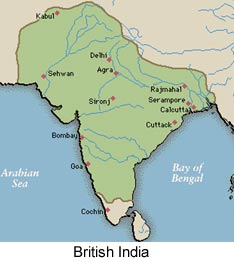

 |  |
The friction culminated in what is known as the Massacre of Amboyna in 1623, when the Dutch seized the English factory there and executed the occupants. No redress was ever obtained and the English had thereafter to be content with a minor role in the East Indies. It was this Dutch success in preserving their East Indian market that drove the English to concentrate on India.  In India the English merchants at once met Portuguese opposition. But here they were helped by three -factors - the unpopularity of the Portuguese, whose control of the Arabian sea and the pilgrim traffic was resented by the Mughals, the waning Portuguese resources, tied as they were to Spain and hard pressed by the Dutch in the cast and the north, and their own maritime prowess. The English went first to Surat and applied to the Mughal court for privileges. But they could do nothing so long as the Portuguese held the sea. For this reason the efforts of Captain Hawkins between 1607-11, in spite of his becoming a boon companion of Jahangir and being given a mansab of 400, came to nothing.
In India the English merchants at once met Portuguese opposition. But here they were helped by three -factors - the unpopularity of the Portuguese, whose control of the Arabian sea and the pilgrim traffic was resented by the Mughals, the waning Portuguese resources, tied as they were to Spain and hard pressed by the Dutch in the cast and the north, and their own maritime prowess. The English went first to Surat and applied to the Mughal court for privileges. But they could do nothing so long as the Portuguese held the sea. For this reason the efforts of Captain Hawkins between 1607-11, in spite of his becoming a boon companion of Jahangir and being given a mansab of 400, came to nothing. The first turning-point came in 16l2 when the Company's ships defeated the Portuguese in the Swally estuary off Surat. The Mughals were then willing to talk and there followed the embassy of Sir Thomas Roe. The second turning point was his agreement with the Mughals in 1618 whereby the Company obtained important privileges in return for the protection of the commercial and pilgrim sea traffic from the Portuguese. The Company, tacitly became the maritime auxiliary of the empire. This agreement covered the Company's relations with the Mughals throughout the seventeenth century. The third turning-point was the siege of Ormuz in the Persian Gulf jointly with the Persians and its capture in 1622 from the Portuguese after a heroic resistance. continued..... next page >> |
Copyright ©2000 indiansaga.info. All rights reserved.
By using this service, you accept that you won't copy or use the data given in this website for any commercial purpose.
The material on indiansaga.info is for informational & educational purpose only.
This site is best viewed at 800 X 600 picture resolution.